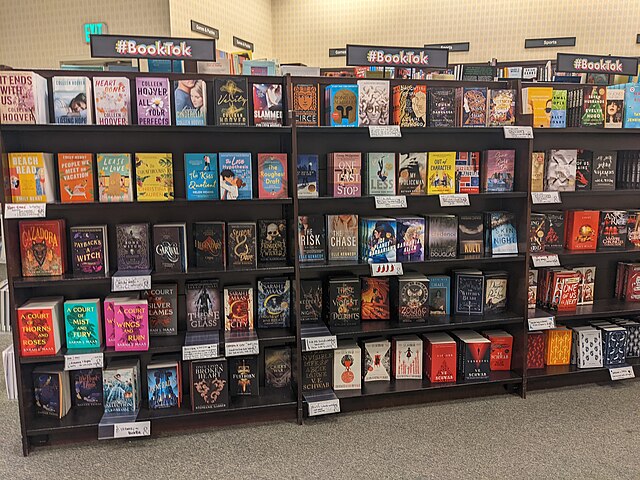No matter if you love to read or haven’t picked a book up without being forced to by your latest English teacher, it is impossible to not have heard of the latest plague bestowed upon literature: trash romance. Hiding under the guise of modern romance, trash romance novels have risen to prominence in the past few years and embraced all of the worst stereotypes for romance as though they were the best.
In the past year alone, romance sales have grown over 50% compared to those of 2022, and more than doubled in comparison to sales in 2021 (Curcic, 2022). What could possibly be causing this exponential growth? Trash romance novels. Authors like Colleen Hoover and Hannah Grace pump out as many as three roughly 300-page books in a single year, all under a predictable and repeatedly disappointing formula. Each book can be read to follow the same storyline every time: the main characters have a “Meet ‘hot’” followed by the tedious “Will-They/Won’t-They,” then they “finally do,” then a simple plot twist making every reader think “Oh my God it’s all over.” Finally the “wait no it’s not” moment comes around and gives readers a happily ever after.
Hoover’s most popular book, “It Ends With Us,” follows this format to a tee. Main character Lily Bloom meets love interest Ryle Kincaid within eight pages, and by page 13 there is already a mention of sex. The characters “unfortunately” part ways never to hear from each other again, then, by chance, manage to run into each other time and again until both finally decide to pursue a relationship. However, by the time the book has reached its halfway point, the relationship is in tatters. Sparing the details, Hoover loves to add spice to the formula in her books resembling an “Is this a red flag? No problem, I’ve got my rose-tinted glasses on me at all times.”
After a third time being abused by her supposed soulmate, main character Bloom finally decides to leave and follow after her first love, revealing a hidden storyline that has still managed to follow the same formula within the book. The two end up together and “Wait no it’s not” is happily reached, tying the book off with a great big shiny bow.
Now, one may be wondering what the issue is with books that follow a formula. Predictability can be comforting, and it’s not a secret to anyone that romance is a known guilty-pleasure genre. However, the issue here goes deeper than simple formulaic writing. The characters in several of these novels are underdeveloped, written as no more than stereotypical bobbleheads representing everything any woman can tell you she is tired of being perceived as.
If you were to visit your local bookstore’s romance section right now, it’s practically guaranteed to be about a ‘girlboss,’ a working woman who doesn’t have time for love, who ends up falling for a man who doesn’t give up as easily as “every other man” has. “Icebreaker” by Hannah Grace, “In Five Years” by Rebecca Serle and “It Ends With Us” by Colleen Hoover are just a few examples of this exact problem. Every woman is written the exact same way with a different name.
So why are they so popular? They’re easy to read. Each repetition of the same storyline within 300 pages ends the same way, with no critical thinking skills needed. While romance may not be historically known for its complexity and depth as a genre, the element of predictability has overtaken any other redeeming quality the books used to have in what’s been released most recently.
It’s easy to be sucked into the familiarity of a book with an ending you can recognize from the first 30 pages, but I urge those of you with “read more!” as your New Year’s resolution to try your hardest to venture out into the unknown. Pick up a book you found without the help of BookTok, and you may be pleasantly surprised. After all, at least the ending would have a chance of being something you weren’t expecting. And if you’re lucky, maybe the love interest will even have more to her personality than a weird name and a taste for toxic men.



